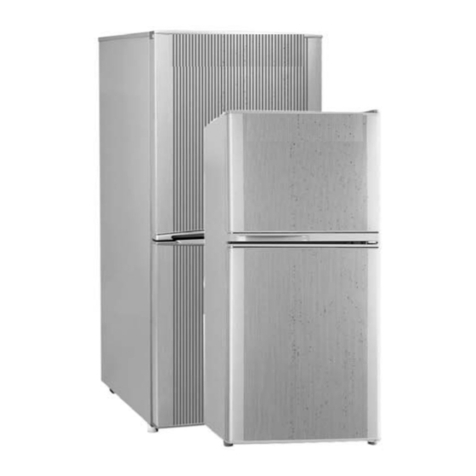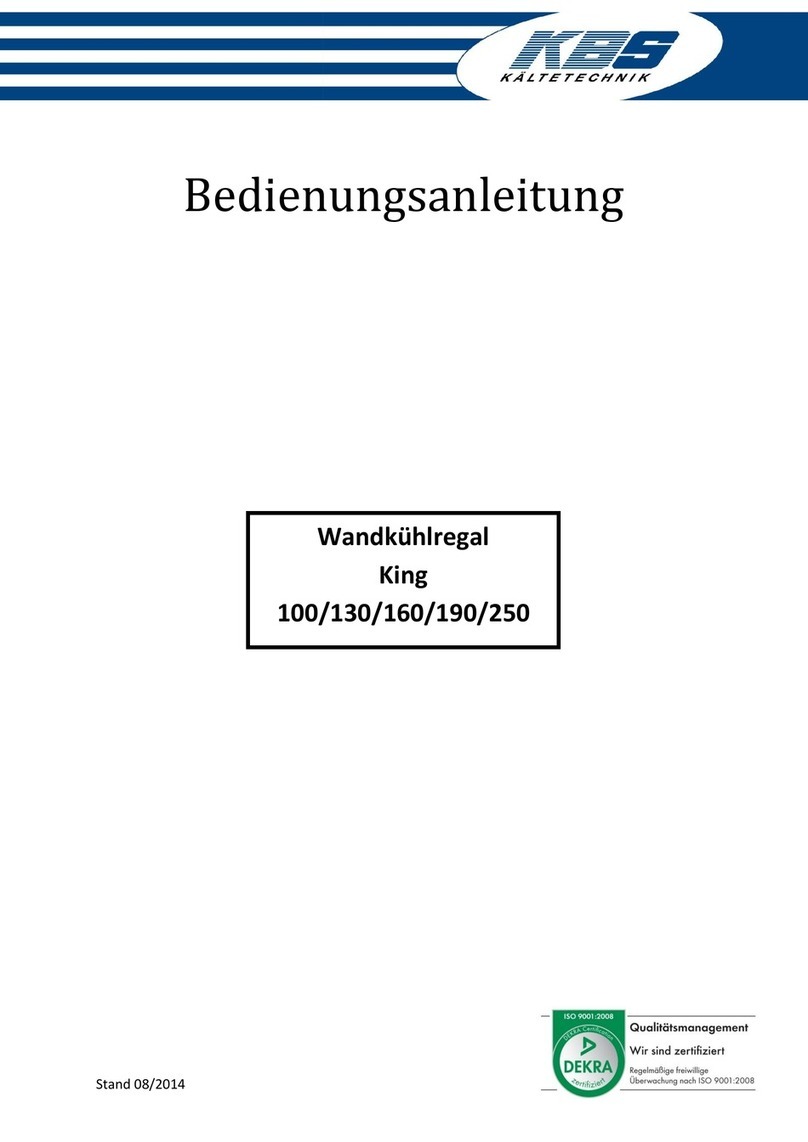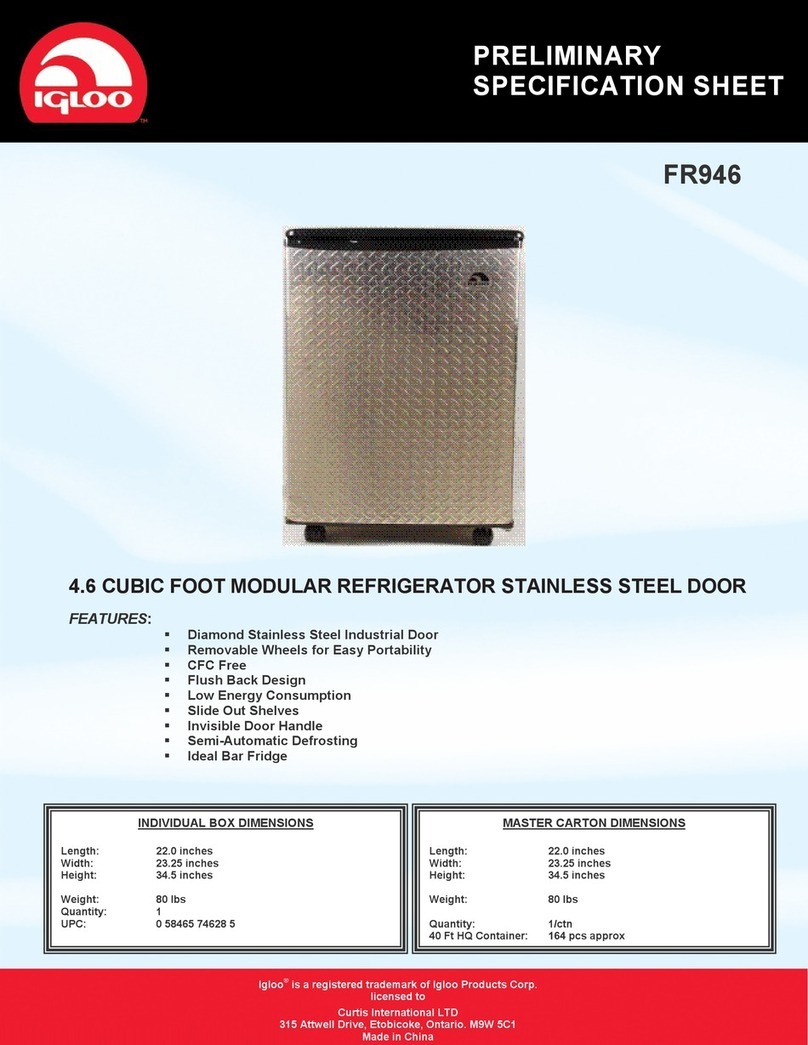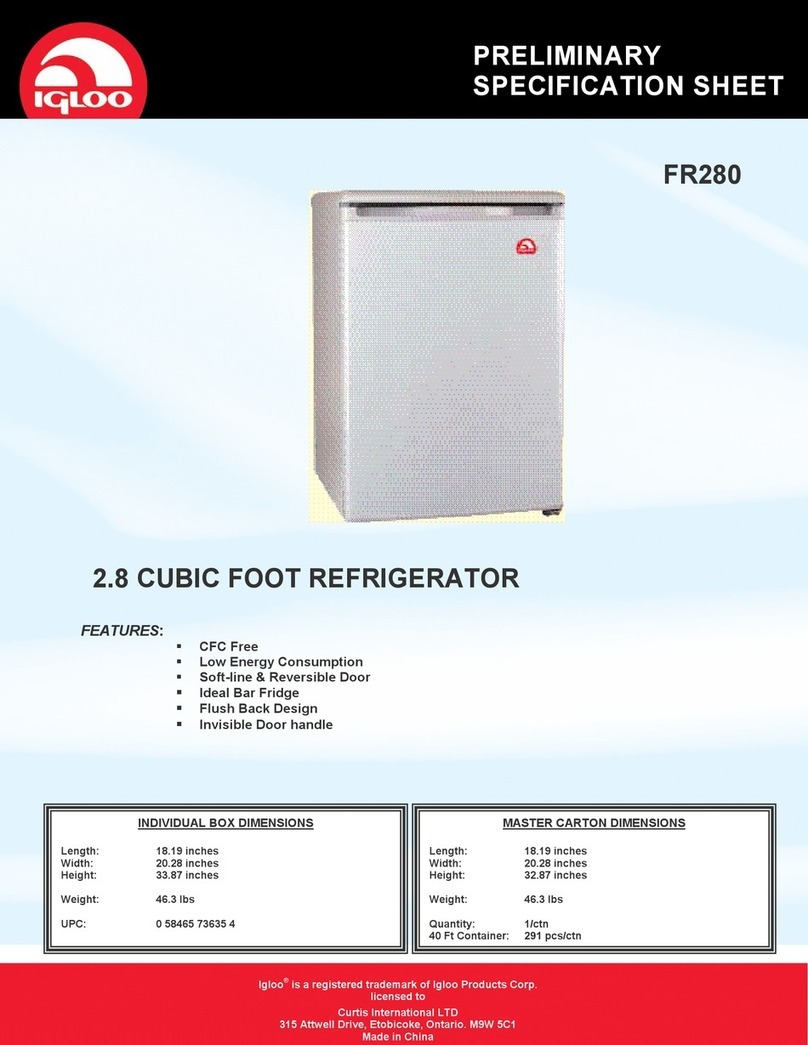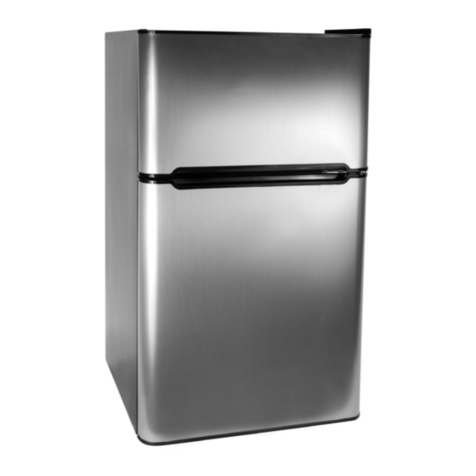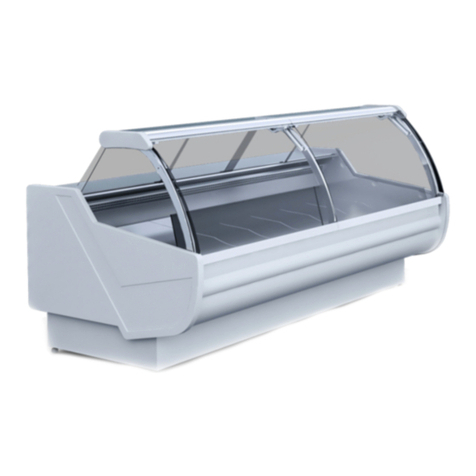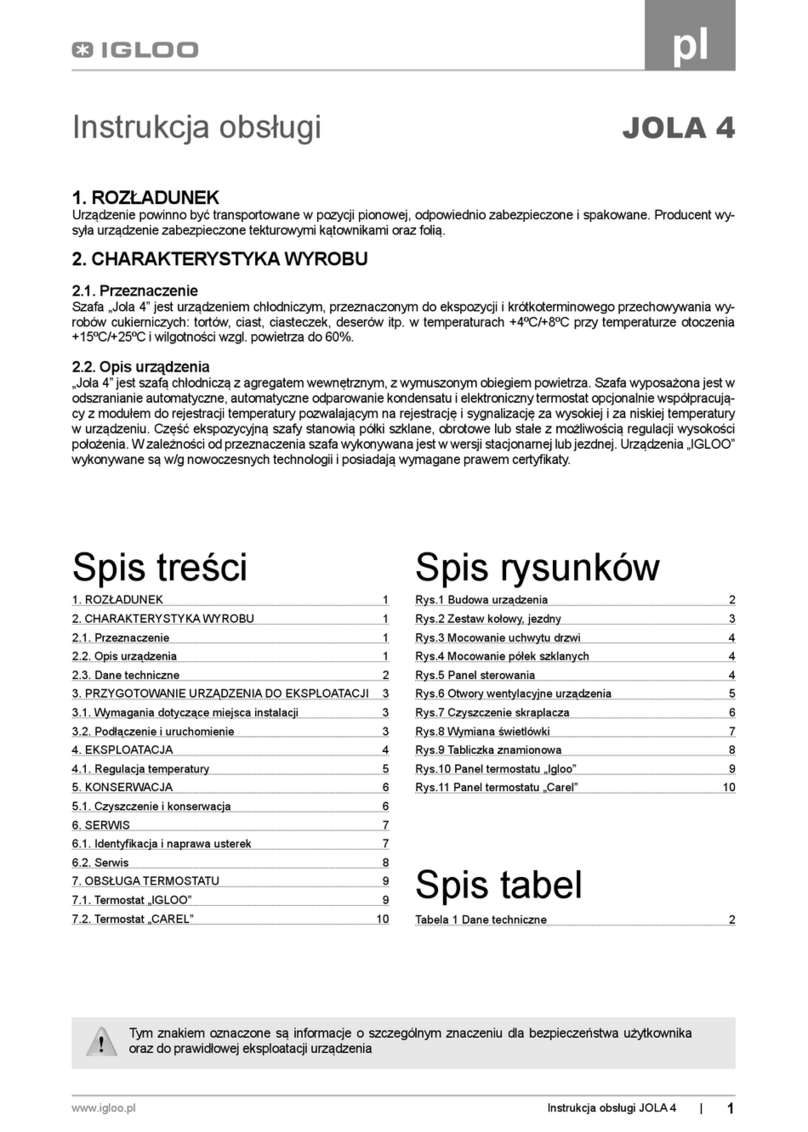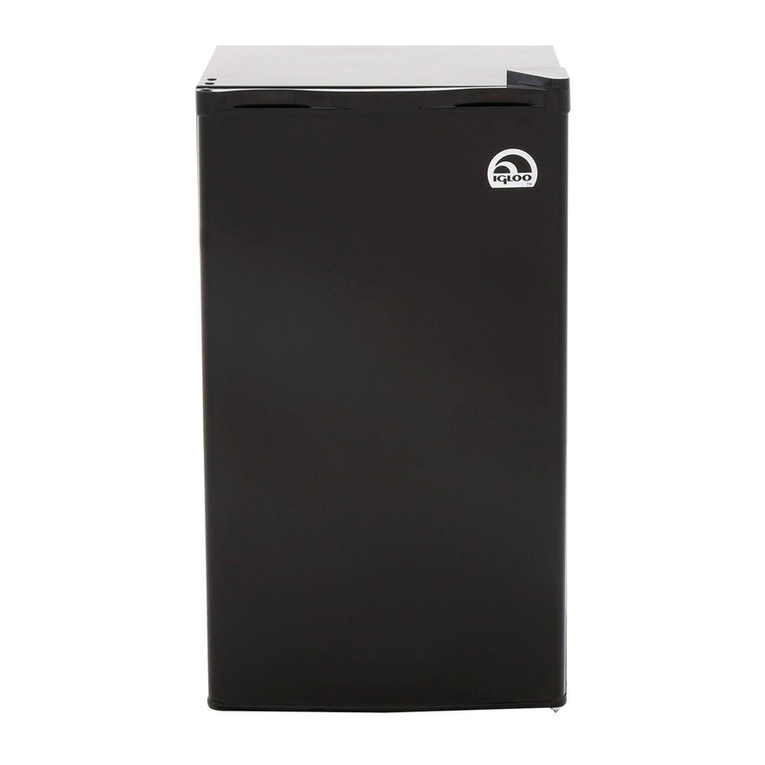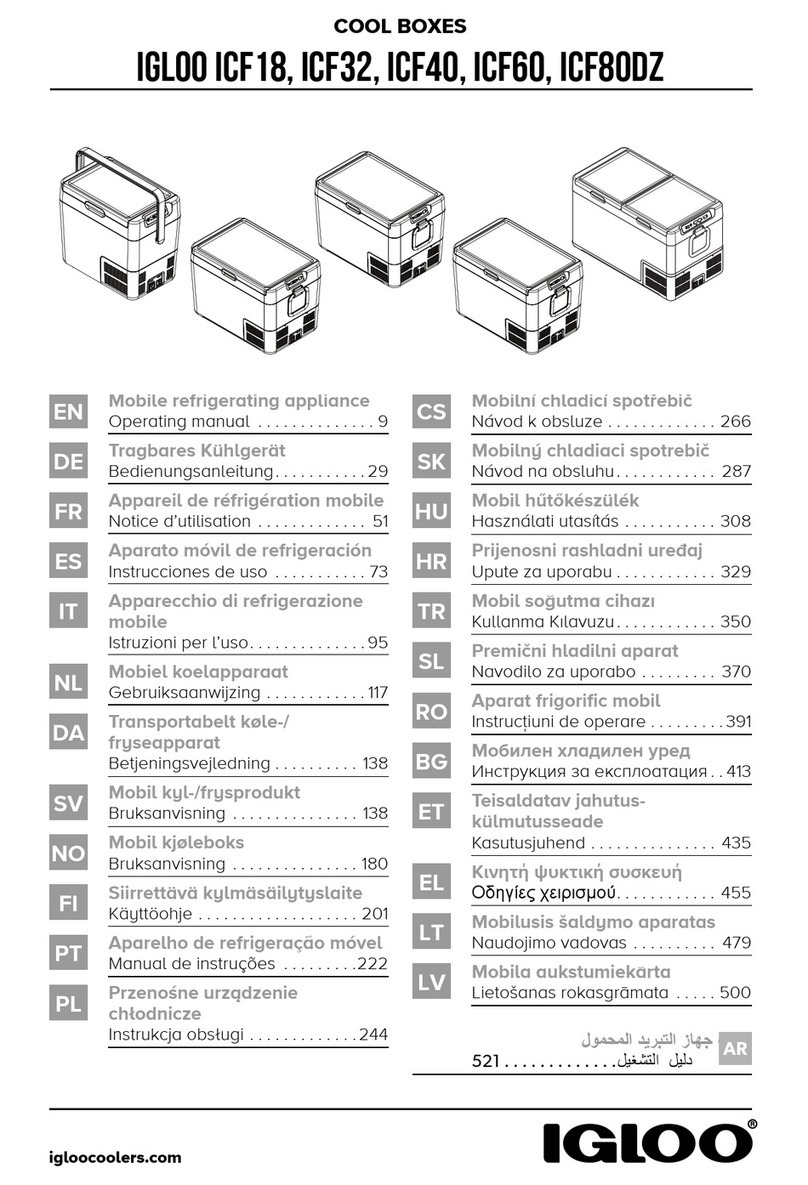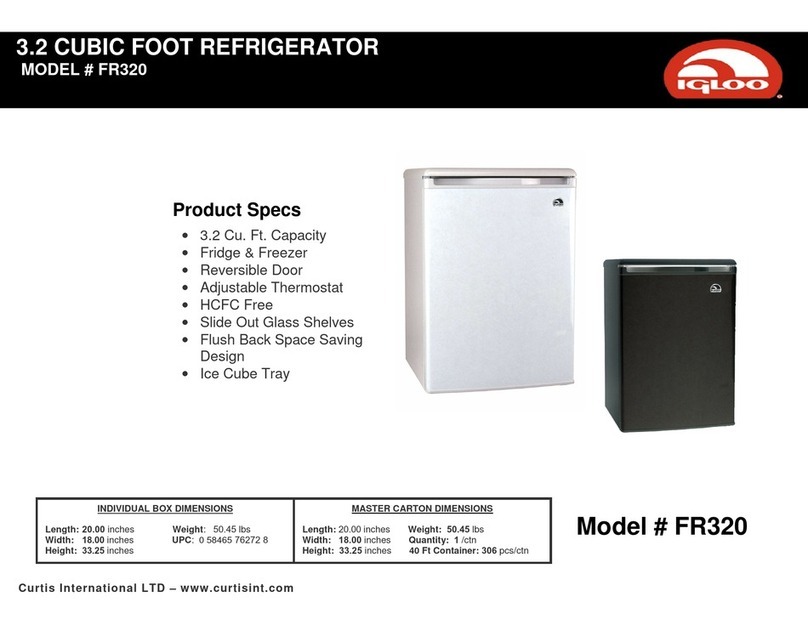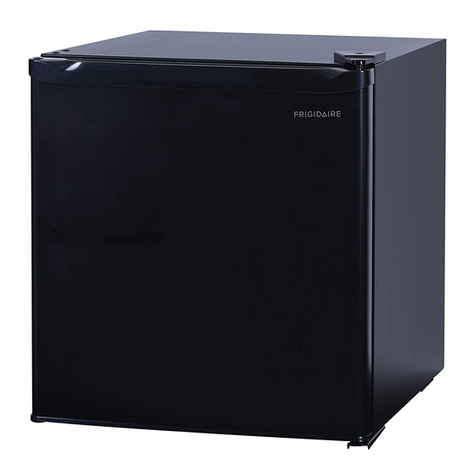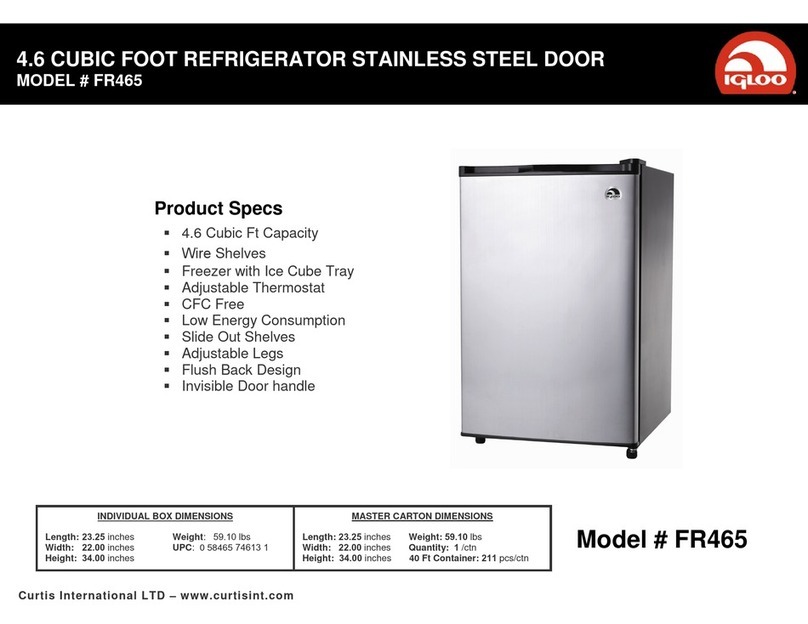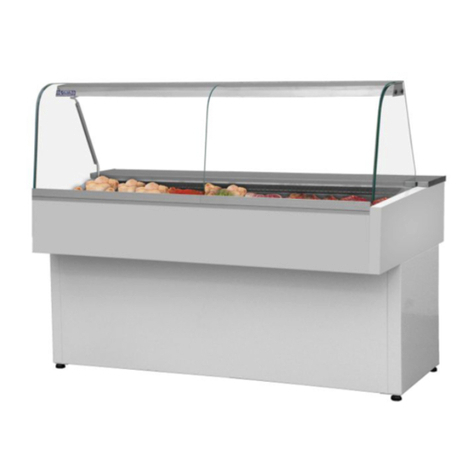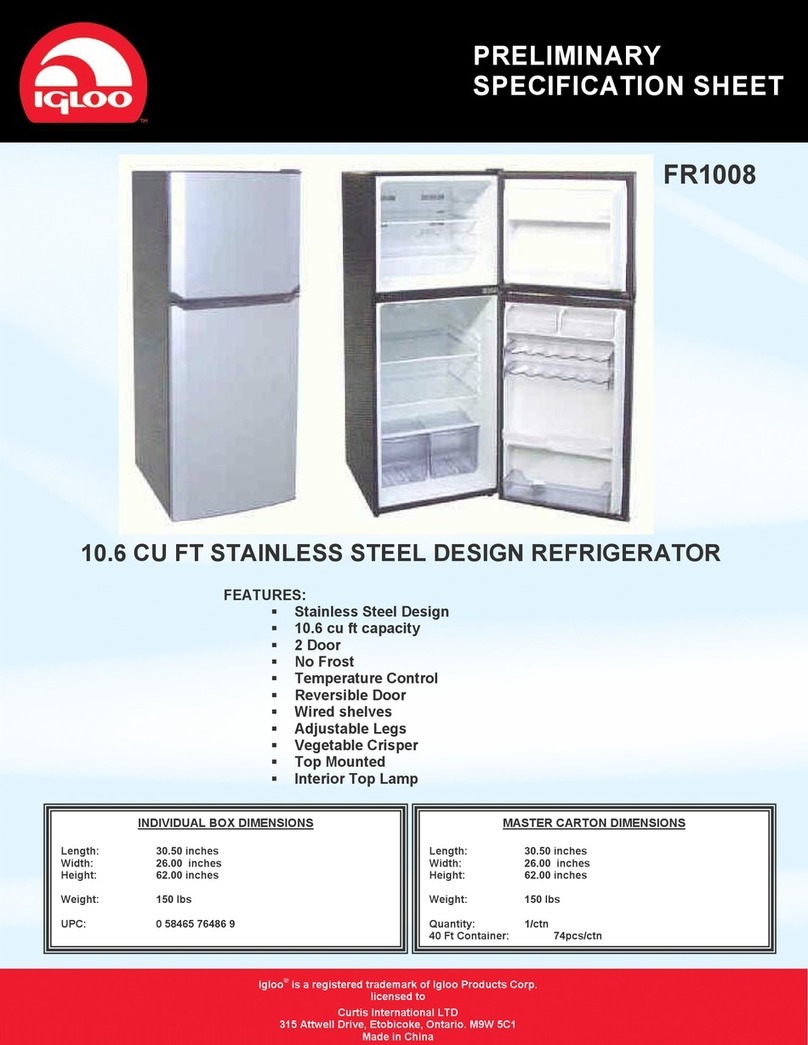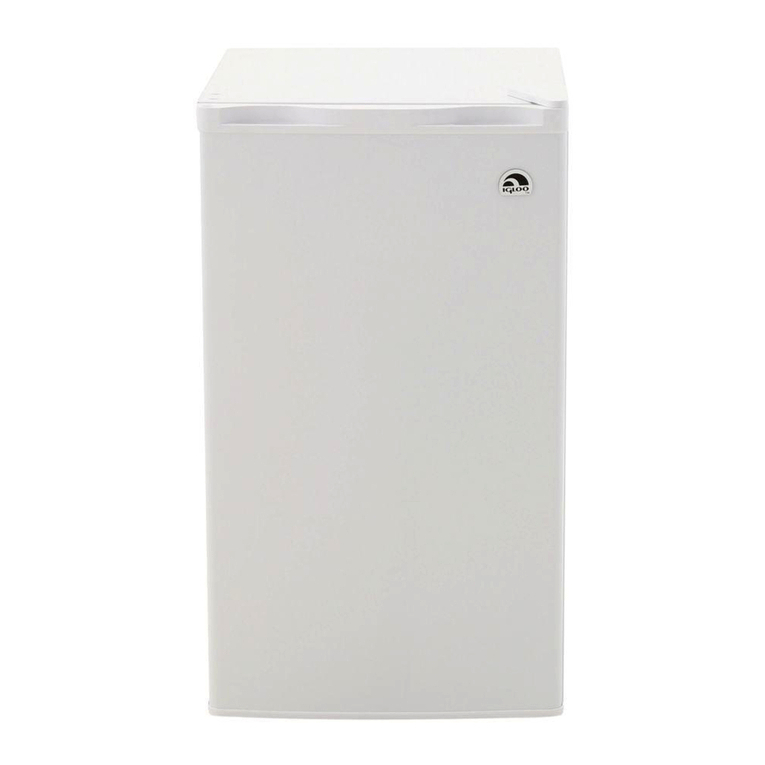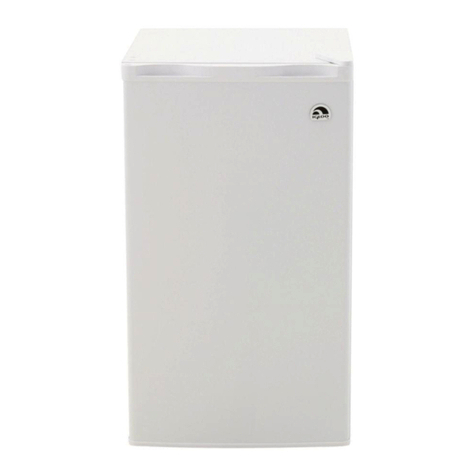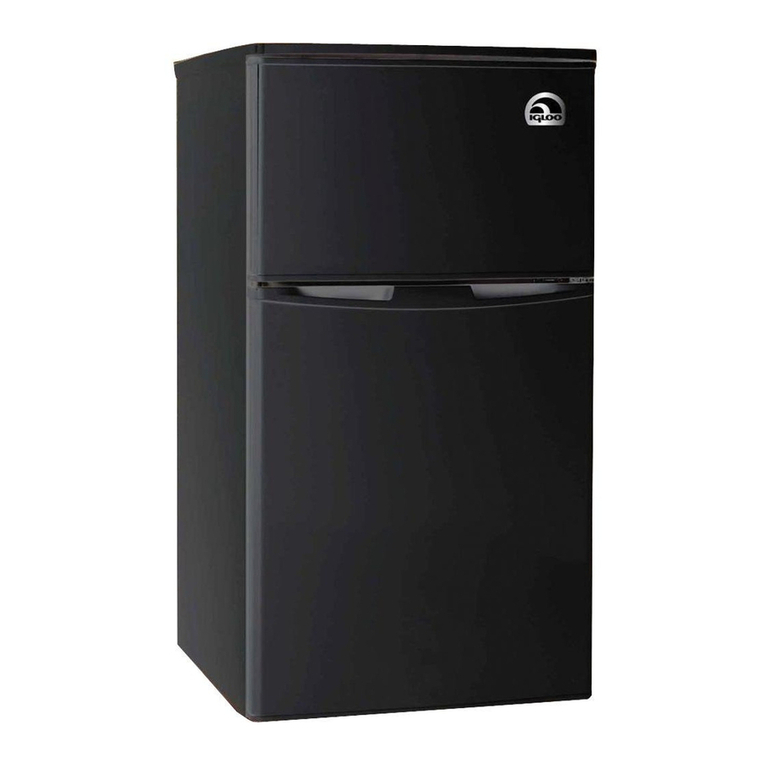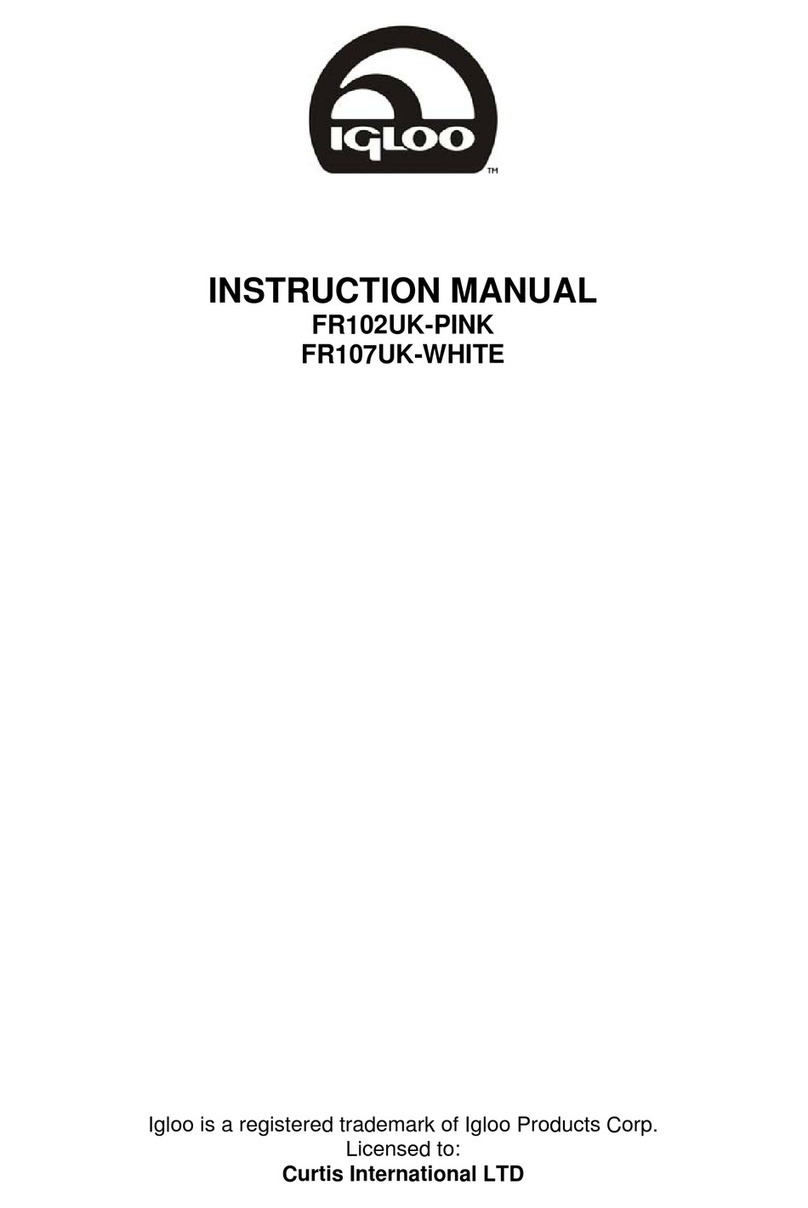
3
pl
Instrukcja obsługi Costawww.igloo.pl
3. PRZYGOTOWANIE URZĄDZENIA DO EKSPLOATACJI
3.1. Wymagania dotyczące miejsca instalacji
• Sprawdź, czy przekrój przewodów zasilających jest odpowiedni dla poboru prądu instalowanego urządzenia
• Zabrania siępodłączania urządzenia przez przewody przedłużające lub rozdzielacze
• Urządzenie należy podłączyćdo oddzielnego, prawidłowo wykonanego obwodu elektrycznego z gniazdem wtykowym
z kołkiem ochronnym (w/g PBUE)
Uruchomienie urządzenia, może nastąpićtylko po potwierdzeniu skuteczności ochrony przeciwpo-
rażeniowej wynikami z pomiarów, przeprowadzonymi zgodnie z obowiązującymi przepisami!
3.2. Podłączenie i uruchomienie
• Rozpakowaćurządzenie i usunąć drewniany podest znajdujący sięna podstawie Rys.2(str.3)
• Urządzenie ustawićna równym i dostatecznie twardym podłożu, a następnie wypoziomowaćje za pomocą
nóżek
• Ściągnąć folięochronnąz elementów urządzenia (m.in. z wnętrza urządzenia i odbojnicy frontowej)
• Jeżeli urządzenie trafido użytkownika częściowo zdemontowane dla zabezpieczenia w czasie transportu
należy wykonaćnastępujące operacje:
1. Zamontowaćzespółhaka w listwach stelaża Rys.3 (str.3)
2. Pod dnem korpusu urządzenia (ok.110 mm od pleców regału, w części środkowej korpusu) znajduje sięspust
wody z odszraniania, z którego należy przewidziećodpływ wody do kratki ściekowej
• Pierwsze mycie urządzenia powinno byćwykonane po rozpakowaniu urządzenia i przed jego uruchomieniem. Urzą-
dzenie należy umyćwodąo temperaturze nieprzekraczającej 40ºC z dodatkiem neutralnych środków czyszczących.
Do mycia i czyszczenia urządzenia zabrania sięstosowania środków zawierających chlor i sód różnych odmian,
które niszcząwarstwęochronnąi elementy składowe urządzenia
!
Ewentualne pozostałości klejów czy silikonu
na elementach metalowych urządzenia usuwaćwyłącznie benzynąekstrakcyjną(nie dotyczy elementów z plastiku i
tworzyw sztucznych!). Nie wolno używaćinnych rozpuszczalników organicznych.
Podczas mycia urządzenia zabrania sięużywaćstrumienia wody. Urządzenie należy myć
przy użyciu wilgotnej ściereczki
• Umieścićwtyczkęprzewodu przyłączeniowego bezpośrednio w gnieździe wtykowym (zabrania siępodłącza-
nia urządzenia przez przewody przedłużające lub rozdzielacze!)
• Załączyćprzycisk wyłącznika głównego Rys.8/2 (str.4), co spowoduje załączenie regulatora temperatury, a
następnie agregatu urządzenia
• Na panelu termostatu Rys.8/1 (str.4) ustawićtemperaturę(szczegóły obsługi na str.8 i 9)
• Załączyćprzycisk oświetlenia Rys.8/3 (str.4)
Rys.3 Mocowanie haka w stelażu
Rys.4 Zespółpółki siatkowej
Rys.2 Usuwanie podestu drewnianego
1 – Sito regału
2 – Stelażdo mocowania haków
3 – Hak (dostosowany do
trzystopniowej reg. kąta
zawieszenia)
1 – Półka siatkowa
2 – Zespółhaków wraz z profi-
lami (kontr. usztywniająca
półkę)
1 – Wykręcićnóżki z podestu
2 – Usunąć drewniany podest
3 – Wkręcićnóżki w nakrętki przy-
spawane do ramy urządzenia
1
2
3
123
1
2
